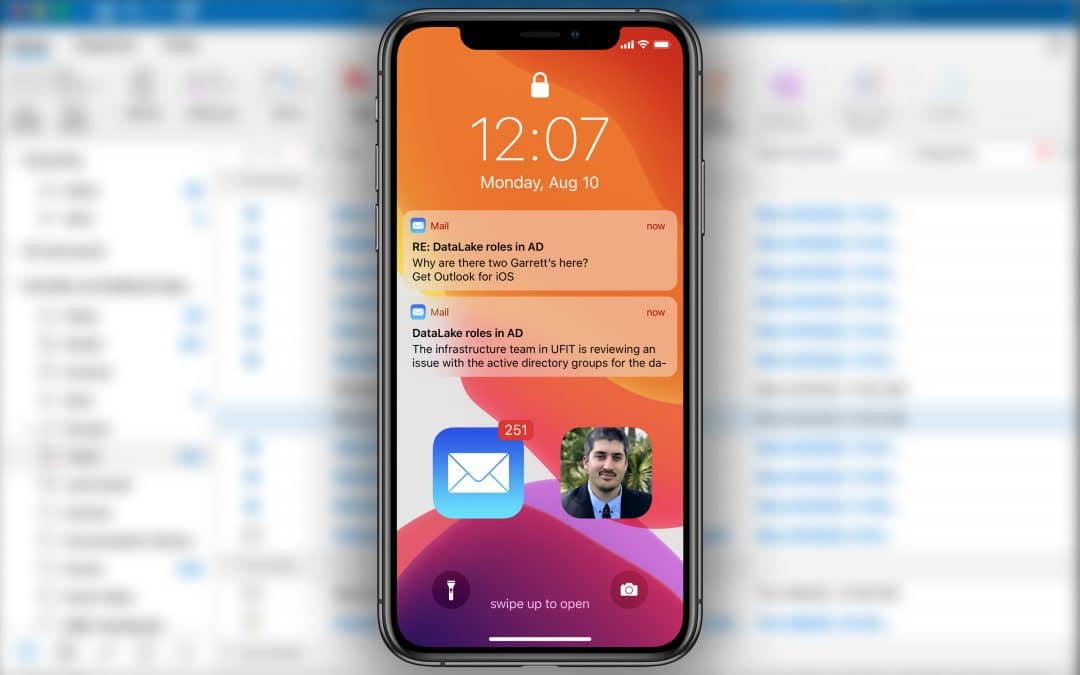“I think I just emailed the entire university”
Meet James Martinez, plus, tips on how to communicate professionally via email if you ever find yourself in a similar situation
If you didn’t know the name James Martinez, or maybe James Martin (a moniker mistakenly bestowed upon him in one of the many, many reply all messages), before Monday, you likely do now. The Data Engineering Manager at UF IT skyrocketed to fame among the University of Florida community and beyond as the sender of the accidental mass email that he estimates was sent out to about 100,000-plus people.
The email addressed an issue regarding lost access among certain IT professionals at UF to the DataLake service, which stores data across the university.

The man, the myth, the legend: James Martinez.
Martinez, taking a proactive approach, drafted the email to let IT staff across UF’s colleges know that they might have issues accessing the DataLake and that UF IT was working to solve the issue.
The email was intended for about 45 IT staff members, but unbeknownst to Martinez, an erroneous behind-the-scenes process linked the group to everyone associated with UF instead of the target audience, the Warrington College of Business alumnus explained. Once he hit send, Martinez immediately knew something was awry.
“Within seconds of sending the email, I received several Microsoft Outlook undeliverable responses,” Martinez (BSBA ’09, MS-ISOM ’12) said. “I work with the people the email was intended for on a regular basis, and when I saw the email addresses that were being marked undeliverable, I thought, I don’t know these people.”
Recognizing there was a new issue, Martinez called his immediate supervisor and the director of the department.
“My director was in a meeting, and he said he’d get back to me after it was over,” Martinez said. “That’s when I told him, I think I just emailed the entire university.”
Based on the number of reply all messages, direct replies, unsubscribe requests and phone calls, Martinez could only assume that every person with a UFL email address received his message.
“I would ballpark that I received thousands of emails and close to 100 phone calls,” he said. “I’m working from home, so my office line is forwarding to my cell. I received a call on my cell every 5 to 10 seconds from people asking about the email.”
Jumping to solve the new problem, Martinez and the team worked with their UF IT colleagues to disable the email, effectively shutting down replies.
“We escalated it as quick as possible, and ultimately, we learned some internal lessons that will help us prevent something similar from happening again,” Martinez said.
Overall, Martinez is proud of the way he and UF IT handled the situation and noted he was happy to have brought the UF community a little closer together in a time when doing so is challenging due to COVID-19.
“There’s been a lot of anxiety recently with COVID, diversity conversations, coming back to school and finals,” he said. “It seems like most people had a good laugh and the UF community got to come together and interact with each other in a way that they hadn’t been able to do recently.”
Martinez is also excited about the creativity spurred from the situation.
“It truly is interesting to see how everyone has come up with really creative things,” he said. “I find it all funny – the song, the memes – there’s so much creativity. It’s great to see people making opportunities for themselves to showcase their talents.”
During his time at Warrington, Martinez took courses in professional communication. Reflecting on the original email, he’s glad he did.
“If I had sent an email that was embarrassing, then I might be thinking I won’t have a job very soon,” he joked.
To help you write with the same professionalism Martinez did, we asked Director of Warrington’s Management Communication Center Fiona Barnes to share some tips for email communication in the workplace. Here’s what she had to say:
“Some of you may be familiar with Mark Twain’s response to his prematurely published obituary: ‘the reports of my death are an exaggeration.’ Over the past few decades, the many reports and predictions of email’s demise have been similarly premature. Email is still very much alive, despite its detractors, and in the current virtual workplace, it is proliferating. What can you do to stem the tide and make it more productive?
- Only use ‘reply all’ for special situations, when the response is relevant and useful both to the original sender and all the other people on the thread. Forget ‘thanks,’ or ‘please unsubscribe me,’ or most unhelpful of all, ‘please don’t reply all.’
- Keep emails short (no longer than 200 words, when possible). Studies indicate that currently between 40-46% of emails are opened on a mobile device. So, think about your phone screen when you’re drafting an email, and use links and attachments to include further information.
- Make subject lines work for your reader. Our first response to seeing an email: why am I getting this message and what priority should I give it? Make your subject lines informative, so that your reader doesn’t have to hunt for its purpose. And if your reader needs to do something in response, make the subject line active. For example, ‘Need Survey Data by 2 p.m.’ is much more likely to get an active and punctual response than ‘Survey Data.’
In essence, though, the foundation of all good written communication, email or otherwise, lies in incorporating not only your own goals and needs, but also those of your reader. Think about the emails you find most effective and efficient, and model your emails on those.”




